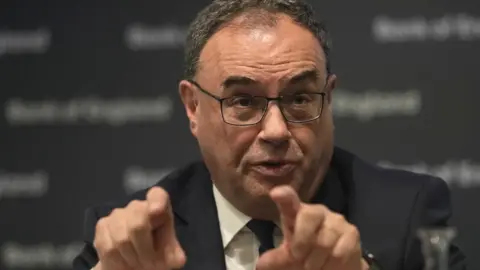Almost 15 years ago, when the UK was in the foothills of a prolonged period of near-zero interest rates, one of the top bosses at the Bank of England told me that savers might deal with low returns by eating into their financial nest eggs.
At that time the Bank was inundated with letters from angry savers, who could no longer live off the interest returns of their savings pots.
Now, I hear, the opposite is true. The Bank's post room is full of correspondence from savers delighted at their bumper returns, following the rapid increase in interest rates to above 5%.
None of this should matter to where rates are now heading. But the decision-makers at the Bank of England know they are having to navigate some tricky waters with the public, politics and the financial markets over the coming year.
The big question of 2024 for the Bank is: when exactly will it start to cut rates? The first decision is on Thursday, and few expect there will be any changes from the current rate of 5.25%.
The crux of the situation is that the headline rate of inflation - the rate at which prices rise - may fall very rapidly, even below the 2% target by spring, alongside actual falls in domestic energy prices. But interest rates are not expected to fall so fast.
The Bank will be watching other measures of underlying inflation, such as core inflation which strips out the impact of food and energy prices.
It is yet to be convinced, in particular, that wages and prices have shaken off the period of above-average increases. Some economists argue that the Bank will wait until it gets firmer data on, for example, whether annual wage bargains remain well above 2% by the time of its May decision.
There will be a presentational difficulty in resisting rate cuts should inflation be well below 2%, and if the economy is not growing or even in a technical recession.
There will be business pressure for cuts, and in an election year there could be political pressure, if not from the government itself.

The Bank will have the opportunity on Thursday to explain more of its thinking than normal. It is releasing its quarterly assessment of the state of the UK economy, and forecasts for inflation.
It is also doing an annual assessment of the health of the supply side of the economy - the size of the workforce, the impact of supply chain challenges, and post-Brexit policy changes.